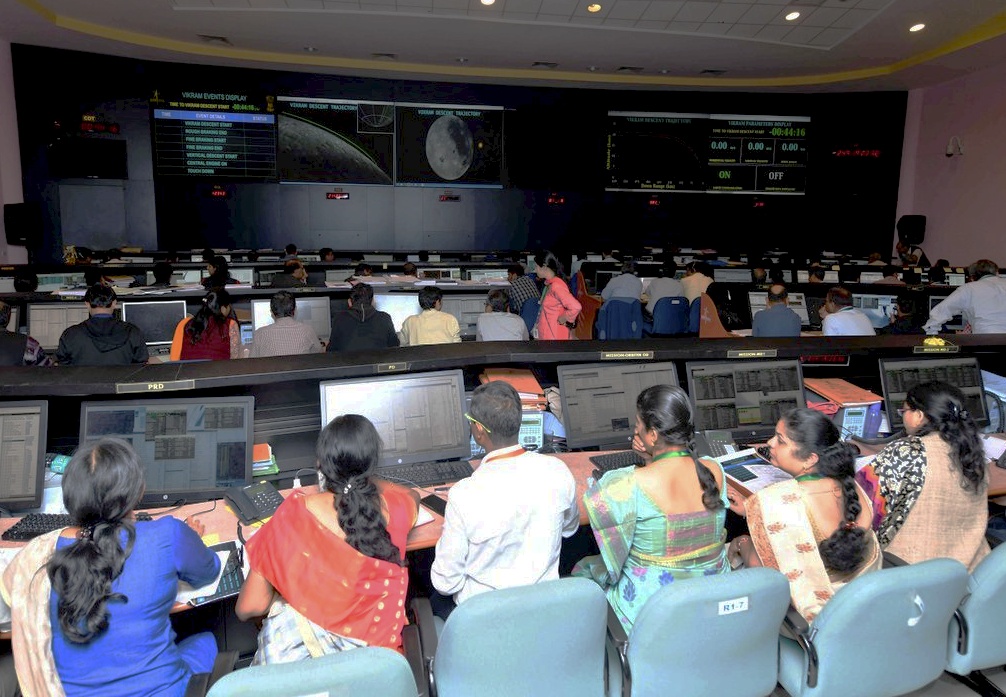
Chandrayan-2 mission so near yet so far
From all the evidences available so far it is clear that India’s moon mission or Chandrayan-2 has crash landed. It’s a story of so near yet so far as Vikram, Chandrayan-2’s lander lost contact with Isro, a minute before the final touch down.

From all the evidences available so far it is clear that India’s moon mission or Chandrayan-2 has crash landed. It’s a story of so near yet so far as Vikram, Chandrayan-2’s lander lost contact with Isro, a minute before the final touch down.
While ISRO in a brief announcement has said that it was analysing data it’s merely euphemism for admitting the fact the mission has crashed and Vikram lander is as good as dead. The scientific communities around the world which have been eagerly tracking the final phases of landing through radio telescopes have also confirmed that something had terribly gone wrong in the final stages of landing.
In the initial stage of Vikram’s manoeuvre the moon mission seemed successful as there was cheer in Isro’s command and control centre in Bengaluru. Isro officially confirmed that descent was normal and smooth when Vikram was at an height of 2.1 kilometres from the moon’s surface. Suddenly it lost signal thereafter indicating that there was something gravely amiss.
Also read | Lunar mission through the years
During Vikram’s descent, the “rough breaking phase” of landing happened smoothly in the first 10 minutes. That was part of the crucial “15 minutes of terror” the Isro Chairman K Sivan had famously described.
Vikram also descended as planned for the next two minutes in what is called as the second stage of “breaking” phase in which it was reducing the velocity of its fall on the Moon surface. The velocity had reduced to 950 metres/ per second. The altitude was less than 20 kms.
But suddenly there was a spike in velocity in the last 3 minutes, suggesting something had gone wrong. Instead of slowing down the spacecraft was hurtling down. The spacecraft’s path was visually off from the radars. Gloom set in the command centre. It’s believed that something went wrong when Vikram was turning from vertical 50 degree to horizontal position. Whether retro rockets fired properly ( the rockets are supposed to bring down the speed of the spacecraft) is not known. But it was clear that the spacecraft is dead.
Since communication was lost the scientists are now trying to figure out which direction the antenna of the spacecraft was pointing towards. It’s possible either it had crashed or landed in a position that it was no longer able to send any signal. The antenna need to point towards the direction of the earth for Isro to receive its signals.
Vikram was supposed to navigate in the last one minute, followed by adjustment for clear surface which was described as “fine navigation phase”. None of that happened as signals and therefore contact was lost with the spacecraft.
Also read | There will be a new dawn and better tomorrow: Modi on Chandrayaan-2
It appears that the rover which was kept inside the lander also perished. Isro, however, would continue to receive signals from the Orbiter which is revolving around the moon. Originally the orbiter was expect to stay for a year. The scientists now believe that it could actually manage to stay on its course for another year as it carries an extra fuel of 40 kilos.
In the coming days Isro scientists would be trying to analyse the causes of last minute mishap on the basis of available data. They would also be trying to retrieve as much information as possible. India had embarked upon a complex scientific mission and the success rate of such missions so far has been only 50 per cent. Therefore the scientific community has more reasons to learn and push forward with next stages of experiments than despair.


